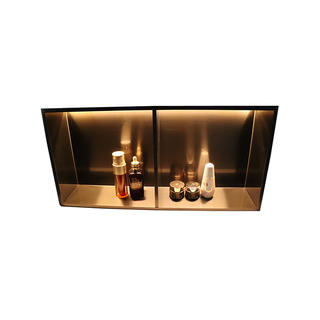In modern architectural design, the quality of waterproofing directly affects the durability and safety of the structure. Especially in humid or watery environments, the selection and application of waterproof materials are more critical. Among many waterproof solutions, stainless steel has gradually become an indispensable part of waterproof areas due to its excellent corrosion resistance, strength and aesthetics, especially in high-humidity environments such as bathrooms, kitchens, and swimming pools. The use of stainless steel niches, whether as part of waterproof structures or as decorative elements, has gained more and more attention and recognition in the market.
Stainless steel has extremely strong corrosion resistance, especially in humid environments. Compared with other materials, it can more effectively resist the erosion of water, salt and chemicals, extending the service life of the product. For example, in places such as bathrooms and swimming pools that require long-term contact with water, stainless steel niches can maintain long-term stable structural properties, avoiding the problem of easy corrosion and rust of traditional materials such as wood or ordinary metals. With consumers' attention to durability and long-term value, stainless steel has become one of the preferred materials for waterproof areas.
In addition to corrosion resistance, the strength of stainless steel is also one of the important reasons for its popularity. Compared with plastic or other metal materials, stainless steel has higher compressive strength and impact resistance, and can better withstand external forces, especially in high-flow or high-pressure environments. In waterproof areas, stainless steel niches can stably support heavy objects and ensure the safety of the overall structure.
Aesthetics is also one of the reasons why stainless steel niches are popular in waterproof areas. Modern architecture pays more and more attention to the integration of design and function. Stainless steel materials are not only practical, but also become decorative elements because of their smooth and modern appearance. Whether it is a bright surface or a matte texture, it can be perfectly integrated with various interior design styles to enhance the overall beauty of the space. Compared with other materials, stainless steel is easier to clean, reduces the accumulation of stains, and ensures the cleanliness and hygiene of the space.
In addition, the environmental performance of stainless steel has also promoted its widespread application in waterproof areas. Since stainless steel can be recycled, it performs well in environmental protection and meets the requirements of modern architecture and consumers for sustainable development. With the improvement of environmental awareness, more and more construction projects choose stainless steel as one of the main materials for waterproof areas.

 English
English 
 English
English Español
Español














